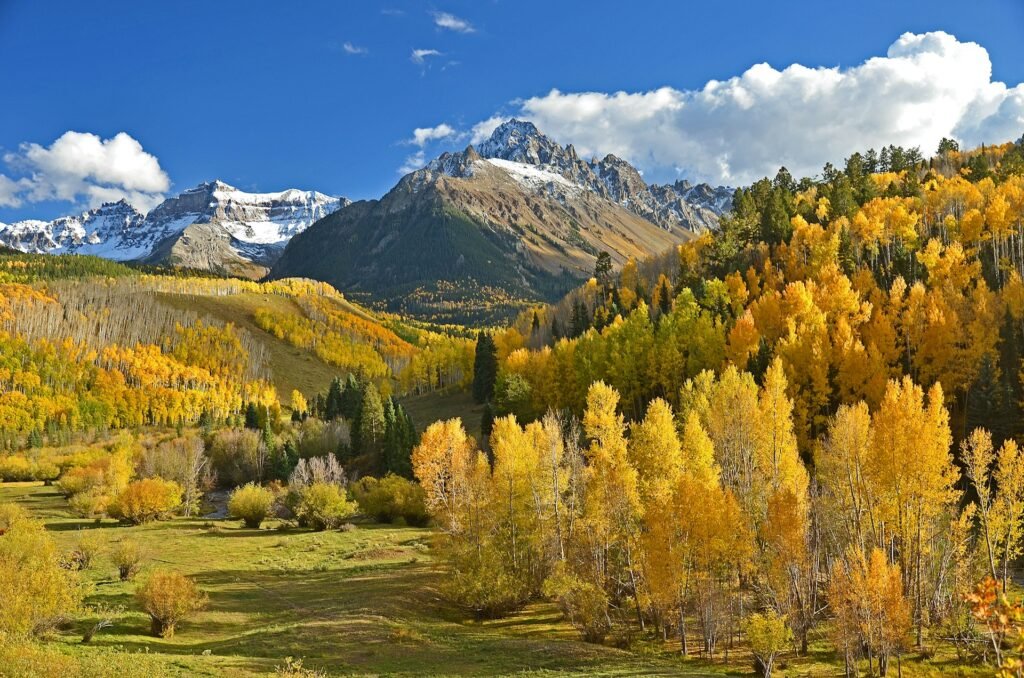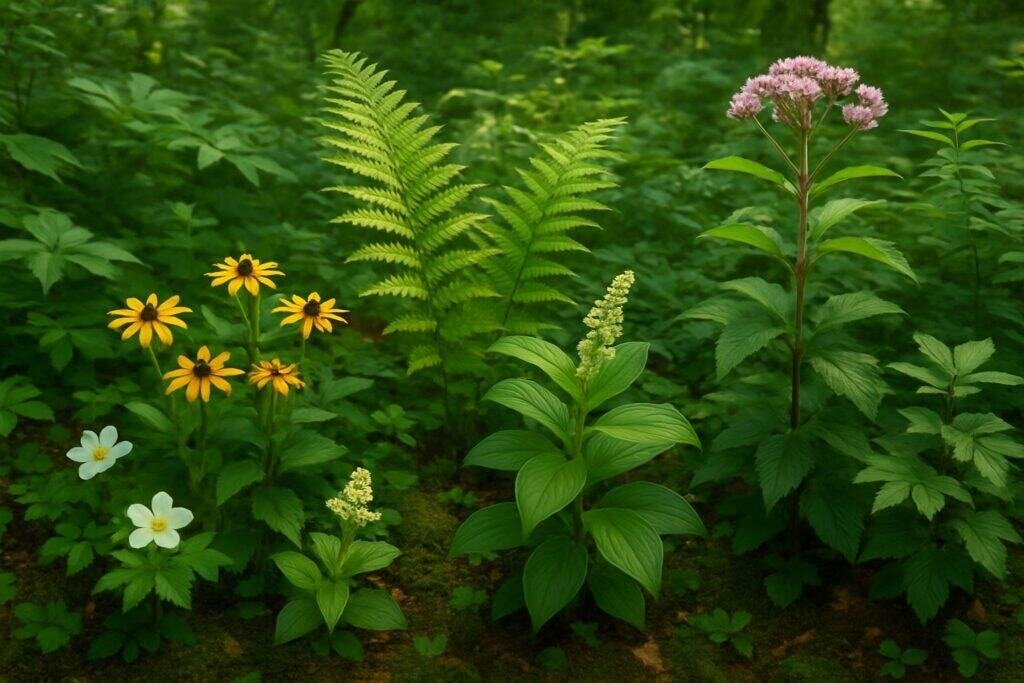Colorado’s landscape is a tapestry woven with the vibrant colors and diverse textures of its native plants. These indigenous species, adapted to the state’s unique geography and climate, form the backbone of local ecosystems. Among them, the Rocky Mountain Columbine, known scientifically as Aquilegia caerulea, stands out for its natural beauty and its status as the state flower. This guide aims to delve into the rich tapestry of Colorado’s flora, celebrating the natural beauty that the Rocky Mountains have nurtured over millennia.
Exploring the world of Colorado’s native plants is not only a journey through the state’s natural history but also an opportunity to understand the symbiotic relationships these plants have with their environment. From the high-altitude havens to the arid plains, each plant has a role to play in sustaining the local wildlife and contributing to the ecological balance. Through this guide, gardeners and nature enthusiasts alike can learn to identify, cultivate, and appreciate the inherent beauty of Colorado’s botanical heritage.
Embracing Colorado’s Botanical Heritage
Colorado’s botanical heritage is deeply rooted in the Rocky Mountains, where the natural beauty of the landscape is mirrored by the diverse and resilient flora. Embracing this heritage means recognizing the value of native plants like Aquilegia caerulea, which not only symbolizes the state’s beauty but also supports its complex ecosystems. This section celebrates the rich botanical traditions of Colorado, urging residents and visitors to explore and preserve the state’s abundant natural wonders.
Understanding the Importance of Native Plants
The Rocky Mountain landscape is home to flora like Aquilegia caerulea, which play a crucial role in preserving Colorado’s natural heritage. Beyond their beauty, these native plants are vital to local ecosystems.
Ecological Benefits and Environmental Impact
Native plants are the cornerstone of ecological health, forming the foundation for diverse habitats. They have evolved to thrive in the local climate and soil conditions, requiring less water and care than non-native species. This adaptation reduces the need for irrigation and chemical fertilizers, mitigating the environmental impact and preserving natural resources. By supporting these plants, we contribute to a sustainable landscape that benefits all forms of life.
The Role in Local Ecosystems and Wildlife Support
Colorado’s native plants, such as the Aquilegia caerulea, play a vital role in local ecosystems by providing food and shelter for wildlife. They form intricate relationships with native pollinators, birds, and other animals that have co-evolved with them. These interactions are essential for the reproduction of plants and the survival of animal species, contributing to the overall health and resilience of the environment.
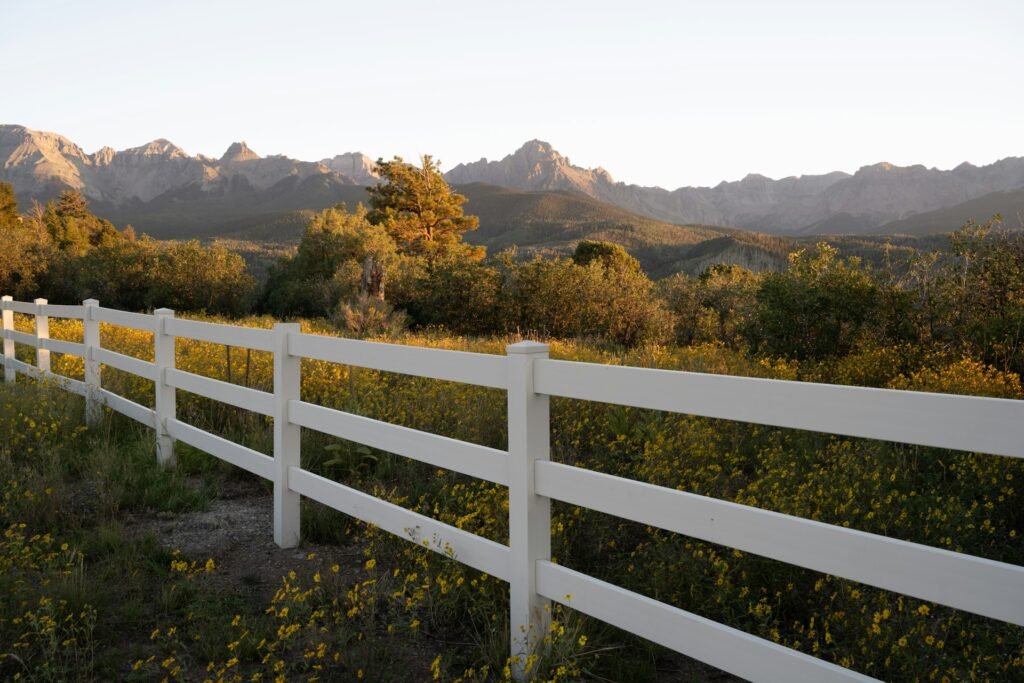
Iconic Colorado Native Plants
The Rocky Mountain region boasts a variety of iconic native plants, including the beloved Aquilegia caerulea, which exemplifies Colorado’s rich biodiversity.
Showcasing the State’s Floral Emblems
Colorado’s state floral emblem, the Rocky Mountain Columbine, reflects the state’s natural beauty and rugged spirit. Its presence throughout the state is a testament to Colorado’s commitment to preserving its natural heritage.
Rocky Mountain Columbine (Aquilegia caerulea) – The State Flower
The Rocky Mountain Columbine, Aquilegia caerulea, is more than just Colorado’s state flower; it is a symbol of the state’s wild and unspoiled landscapes. This delicate bloom, with its unique blue and white petals and yellow centers, can be found dotting meadows and woodlands, offering a splash of color and a touch of grace to the rugged terrain. Its hardiness and ability to adapt to various altitudes make it a perfect representative of the state’s diverse flora.
Ponderosa Pine (Pinus ponderosa) – A Towering Native
The Ponderosa Pine stands tall as a testament to Colorado’s majestic forests. Its towering presence is a common sight in the Rocky Mountains, where it provides shelter and sustenance to the local wildlife. These native trees are not only vital for maintaining the forest ecosystem but also play a significant role in the cultural and natural history of the state.
Flourishing Perennials in Colorado’s Landscapes
The landscapes of Colorado are enriched by a variety of perennials that have adapted to the local conditions, offering beauty and resilience year after year.
Yarrow (Achillea millefolium) – A Versatile and Hardy Choice
Yarrow, known scientifically as Achillea millefolium, is a staple in Colorado’s gardens and wild spaces. This hardy perennial can withstand the harsh climate and thrives in a range of conditions. Its ability to attract beneficial insects and its medicinal properties have made it a favorite among gardeners seeking a plant that is both beautiful and functional.
Winecup Mallow (Callirhoe involucrata) – Vibrant Groundcover
Winecup Mallow, or Callirhoe involucrata, graces the Colorado landscape with its vibrant purple blooms. As an attractive groundcover, it spreads with ease, adding a pop of color and beauty to gardens and natural areas. Its drought tolerance and low maintenance requirements make it a cherished choice for sustainable landscaping in the region.
Nurturing Native Plants in Your Garden
As stewards of the land, we can nurture the growth of Colorado natives in our gardens, fostering a connection with the state’s rich biodiversity. Organizations like the Colorado Native Plant Society, the Plains Environmental Center, and Tagawa Gardens provide resources and inspiration for gardeners to cultivate these local treasures. By choosing to grow Colorado natives, we not only enhance the natural beauty of our surroundings but also support the health of the local ecosystems.
Selecting the Right Species for Your Space
Choosing the right species of native plants for your garden involves understanding the specific needs of each plant and how they fit into your local environment.
Considering Altitude and Climate
When incorporating Colorado’s native plants into your garden, it is essential to consider the altitude and climate of your area. Plants that thrive at higher elevations may struggle in lower, warmer areas, and vice versa. Selecting species that are well-suited to your garden’s climate ensures they will grow healthy and contribute positively to the local ecosystem.
Soil Preferences and Water Requirements
Colorado’s native plants, like the Rocky Mountain Columbine (Aquilegia caerulea) and Linum lewisii, have adapted to thrive in diverse soil types, from the clay-heavy plains to the rocky soils of the mountains. These resilient species typically require less water than non-native plants, making them suitable for xeriscaping. Gardeners should consider the natural habitat of each species, as some may prefer moist, well-drained soils, while others are drought-tolerant and can survive in dry conditions with minimal irrigation.
Maintenance Tips for Healthy Growth
Regular monitoring and minimal intervention are key to maintaining the health of Colorado native plants. They are well-adapted to the local climate and typically require less fertilization and pruning than their non-native counterparts, allowing for a more hands-off approach to garden care.
Understanding Cultural Needs
Each Colorado native plant has unique cultural needs that must be met for optimal growth. For instance, the Aquilegia caerulea benefits from partial shade and moderate water, while the Linum lewisii prefers full sun and well-draining soil. Understanding these specific requirements is crucial for gardeners in Fort Collins or any part of Colorado State, ensuring that native species flourish in their cultivated environments.
Addressing Common Pests and Diseases
While native plants are generally more resistant to pests and diseases, they are not immune. Colorado gardeners may encounter issues like aphids on Aquilegia caerulea or fungal diseases in overly moist conditions. Effective management involves early detection, appropriate cultural practices, and, if necessary, the use of organic or low-toxicity pesticides to mitigate damage and maintain plant health.
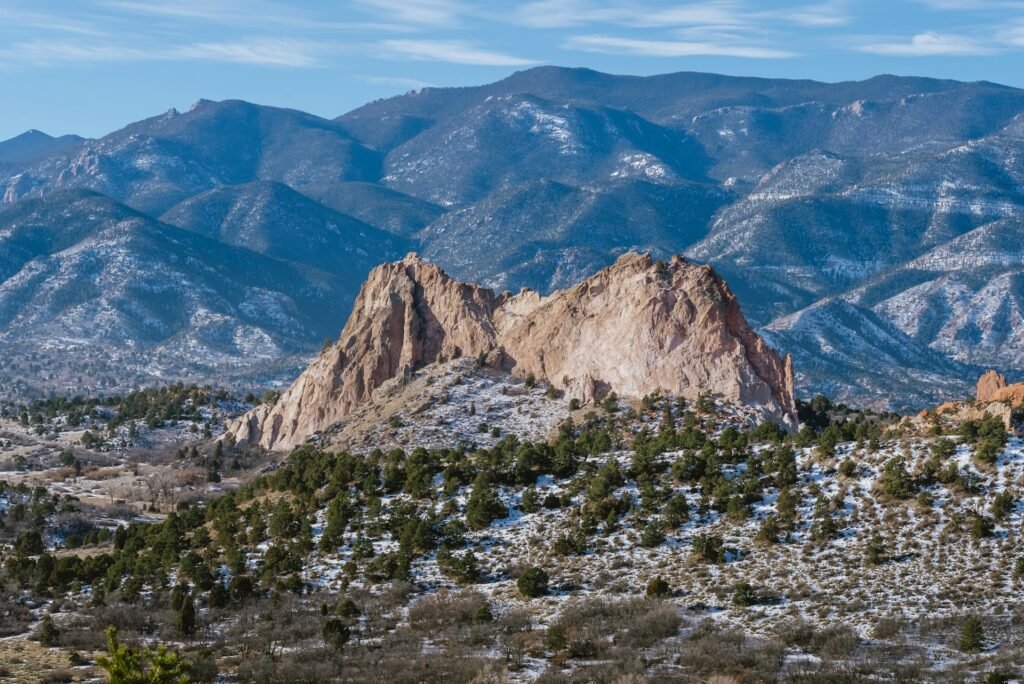
Planting With Purpose
Planting native species is a conscious decision to support the environment, promote biodiversity, and create a garden that reflects Colorado’s unique landscape.
Ecological Gardening With Colorado Natives
Adopting ecological gardening practices by using Colorado natives contributes to local conservation efforts and fosters a thriving ecosystem.
Attracting Pollinators and Beneficial Insects
Colorado native plants are adept at attracting pollinators and beneficial insects, which are integral to the health of any garden. For example, the bright flowers of Aquilegia caerulea draw in bees and hummingbirds, while Linum lewisii’s blooms are favored by butterflies. These interactions not only aid in pollination but also help control pest populations naturally, promoting a balanced and sustainable environment.
Creating Sustainable Landscapes
Landscape design using Colorado natives is not only environmentally sound but also economically beneficial. These plants are adapted to the local climate and soil conditions, reducing the need for water, fertilizers, and pesticides. By designing landscapes with native flora, gardeners can create sustainable spaces that require less maintenance while providing habitats for local wildlife.
Designing Aesthetic and Functional Spaces
Integrating Colorado natives into garden design ensures that both aesthetic appeal and ecological function are considered, creating spaces that are beautiful and beneficial.
A Palette of Colors and Textures
The Colorado landscape offers a rich palette of colors and textures, with native plants like the vibrant Aquilegia caerulea adding splashes of blue and white, and the delicate Linum lewisii introducing soft blues to the garden. These native species provide a diverse range of foliage and flowering options, allowing for dynamic and visually appealing plant compositions.
Seasonal Interest and Plant Combinations
Colorado natives offer year-round interest through thoughtful plant combinations. Early bloomers like the Aquilegia caerulea provide spring color, while the summer-blooming Linum lewisii extends the garden’s appeal. Including plants with attractive seed heads or fall foliage ensures that the garden remains engaging even as the seasons change.
Learning and Resources
For those seeking to deepen their knowledge of Colorado’s native plants, a wealth of learning and resources are available.
Educational Opportunities at Colorado State University
Colorado State University offers extensive educational opportunities, from classes on native plant horticulture to hands-on conservation projects.
Extension Services and Gardening Workshops
Colorado State University’s Extension Services provide valuable guidance for gardeners through workshops, publications, and community programs. These resources are designed to educate on the selection, planting, and care of native plants, offering practical advice for both novice and experienced gardeners in Fort Collins and beyond.
Online Resources and Plant Databases
Online resources and plant databases are crucial tools for identifying and learning about Colorado’s native plants. These digital platforms offer detailed information on species characteristics, habitat requirements, and ecological benefits, making it easier for gardeners to select appropriate plants for their landscapes and contribute to the preservation of the state’s botanical heritage.
Community Engagement and Local Expertise
Engagement with local communities through various initiatives fosters a deeper understanding of Colorado’s native flora. It encourages residents to participate in conservation efforts and to learn from experts in native plant horticulture. Local expertise is invaluable for sustainable gardening practices and preserving the state’s botanical heritage. Through such community involvement, the connection between people and the natural environment is strengthened, leading to a more widespread appreciation for Colorado’s indigenous plants.
Native Plant Societies and Conservation Groups
In Colorado, numerous societies and conservation groups are dedicated to protecting native plants and their habitats. Organizations such as the Colorado Native Plant Society offer resources and events to educate the public on the importance of local flora. They provide a platform for enthusiasts and experts alike to share knowledge, participate in field trips, and engage in conservation projects. These groups play a critical role in safeguarding Colorado’s botanical diversity for future generations.
Visiting Public Gardens and Natural Areas
Colorado’s public gardens and natural areas serve as living laboratories and educational spaces. Places such as the Denver Botanic Gardens and the Gardens on Spring Creek in Fort Collins showcase a wealth of native species, offering visitors a glimpse into the state’s rich plant life. These spaces not only inspire home gardeners but also play a crucial role in preserving species and educating the public about the state’s diverse ecosystems.
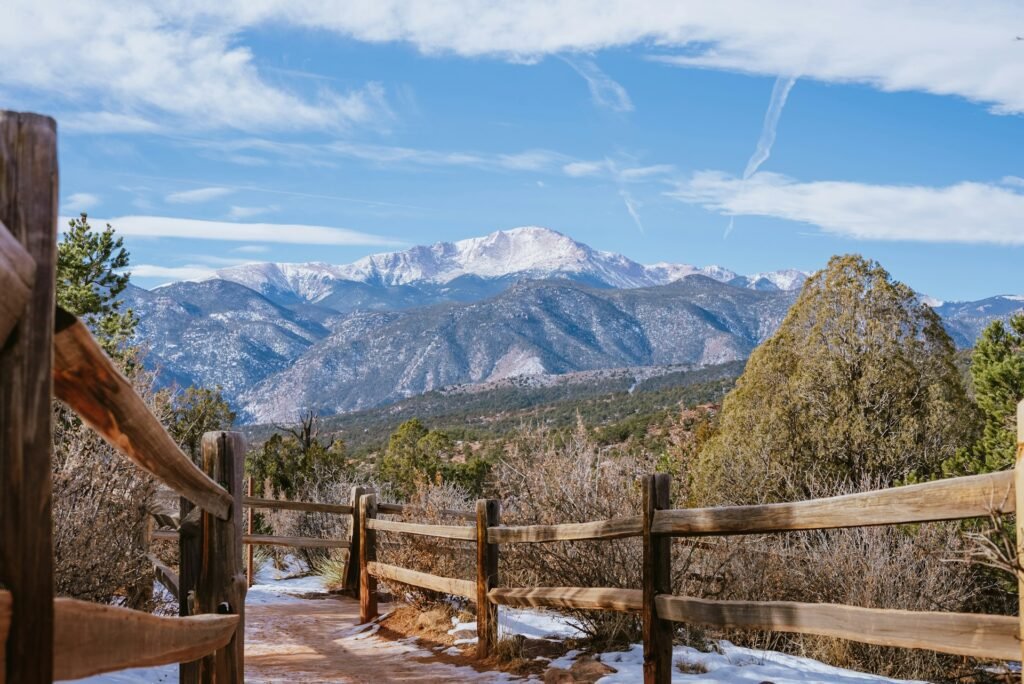
Continuing the Conversation
As interest in Colorado’s native plants grows, ongoing dialogue becomes essential. Gardeners, conservationists, and nature enthusiasts continue the conversation through workshops, public lectures, and field outings. These interactions foster a community dedicated to protecting and enjoying the state’s natural heritage. The exchange of ideas and experiences ensures that the knowledge and passion for Colorado’s indigenous plants thrive.
Blogs and Social Media Platforms
Blogs and social media platforms are instrumental in bringing together a community of native plant enthusiasts. They facilitate the sharing of experiences, advice, and the latest research, creating a vibrant online ecosystem centered around Colorado’s native flora.
Sharing Experiences and Garden Success Stories
Gardeners across Colorado, from the high elevations of the Rockies to the plains near Colorado Springs, actively share their successes and challenges with native plant gardening. Whether it’s a blog post showcasing a bountiful native perennial garden or a social media thread discussing sustainable landscaping practices, these stories inspire others to start their own native plant journeys.
Staying Updated With Recent Extension Posts
Colorado State University Extension provides a wealth of information through its posts, offering guidance on native plant cultivation. By staying updated with these resources, gardeners can access the latest best practices, learn about upcoming events, and find expert advice tailored to Colorado’s unique climate and soil conditions.
The Splendor of Colorado’s Flora Unveiled
Colorado’s native plants are a testament to the state’s diverse ecosystems. From alpine meadows to arid deserts, the flora has adapted to thrive in various conditions. This rich botanical tapestry is integral to Colorado’s natural beauty and ecological health, providing essential habitat for wildlife and contributing to the state’s scenic landscapes.
Captivating Facts about Native Plants
One captivating fact is that many Colorado native perennials are adept at surviving in the state’s challenging climates, showcasing remarkable resilience and adaptability.
Historical Significance and Traditional Uses
Colorado’s native plants hold historical significance, with many species used by indigenous peoples for medicinal and culinary purposes. For example, the roots of the Yucca plant were traditionally used to make soap, while various berries served as a crucial food source. These traditional uses underscore the deep connection between the state’s flora and its cultural heritage.
Unique Adaptations to Colorado’s Climate
Adaptations such as deep root systems, waxy leaf coatings, and the ability to withstand extreme temperature fluctuations allow Colorado’s native plants to prosper. These characteristics have evolved, enabling species to survive in the state’s unique climate zones, from the arid plains to the snowy peaks.
The Journey of Discovery and Stewardship
The journey into the world of Colorado’s native plants is one of discovery, learning, and stewardship. It is a path that enriches our lives and contributes to the preservation of the state’s natural beauty.
Embracing the Natural Beauty of Our Home State
By embracing the natural beauty of Colorado, residents and visitors alike can appreciate the diverse array of plants that call this state home. From the delicate blossoms of the wildflowers to the majestic conifers, each species adds to the tapestry of Colorado’s landscape. As we learn more about these plants, we deepen our connection to the land and our commitment to preserving its natural splendor.
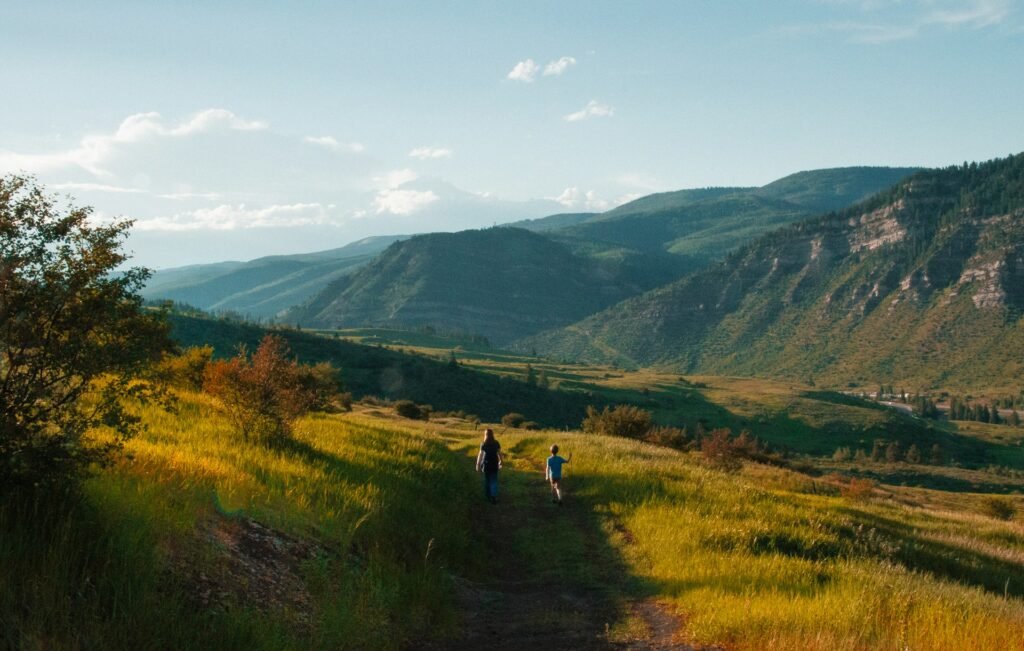
Conclusion: Cultivating an Appreciation for Colorado’s Native Plants
As we cultivate gardens and landscapes, we have the opportunity to foster a greater appreciation for Colorado’s native plants. By choosing to include native species in our garden centers, we support the local ecology and contribute to the preservation of the state’s botanical heritage. Each garden becomes a part of the larger native landscape, working in harmony with the natural world.

